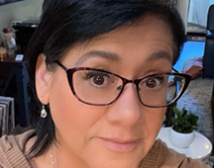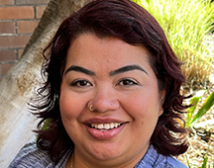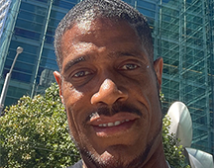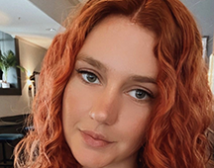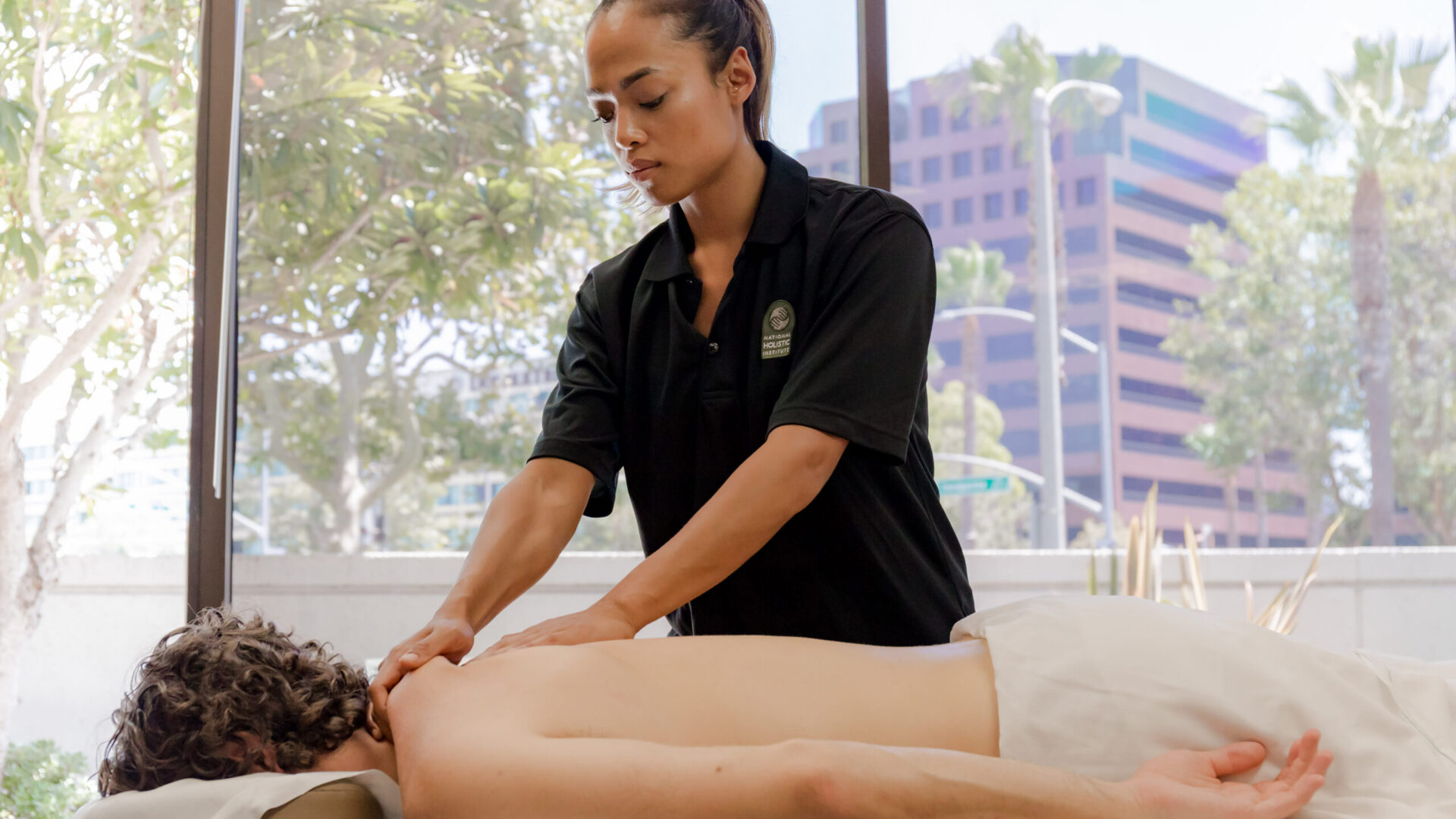
Advanced Neuromuscular Therapy Program
Advanced Neuromuscular Therapy Program
Get the Details!
Welcome to National Holistic Institute!
We are a massage school dedicated to training professional massage therapists. From enrollment to graduation and beyond, you are joining a supportive holistic community dedicated to your success!
Advanced Neuromuscular Therapy Program
Be prepared for the future of massage therapy with NHI’s Advanced Neuromuscular Therapy (ANMT) Program – a 450-hour immersive experience that elevates skilled massage therapists into sought-after specialists in pain management and integrative care. Choose between 100% Online ANMT or Hybrid ANMT learning formats.
The Advanced Neuromuscular Therapy Program is a comprehensive continuing education program, and is the only continuing education program for bodywork in the country that is accredited by the Department of Education. The ANMT Program equips you with the science, precision, and confidence to work alongside medical professionals, athletic teams, and injury rehabilitation – or to thrive in your own referral-based practice.
Compare Hybrid ANMT & 100% Online ANMT
| Program Features | Hybrid ANMT | 100% Online ANMT |
| Weekly Schedule | 1 day/week on campus + online work | Fully online, self paced assignments |
| Hands-On Practice | Live, in-person wtih instructor feedback | Practice at home, submit videos for feedback |
| Best For | Students who prefer in-person guidance & peer interaction | Students who need a fully remote, flexible option |
| Campus Attendance | Required | Not Required |
Our ANMT Program is also well-suited for Physical Therapists, Chiropractors, Doctors, Nurses, and other healthcare professionals that frequently help patients rehabilitate from pain and injury. This program will add depth and dimension to your ability to facilitate recovery in a patient-centered collaborative environment.
If you completed massage therapy education of at least 500 Hours and/or are a licensed health care professional, completion of the Advanced Neuromuscular Therapy Program will allow you to:
- Set yourself apart with an understanding of the biopsychosocial pain management approach.
- Achieve the confidence to communicate and collaborate with other healthcare professionals.
- Be a part of the solution to the opioid crisis by gaining experience with detailed assessment and neuromuscular techniques for persistent pain and injury rehabilitation.
- Increase your freedom and opportunity to work in any environment from spas, to chiropractic offices and physical therapy studios, to building your dream private practice.
If you are a Physical Therapist, Chiropractor, Doctor, Nurse or other healthcare professional who frequently helps patients rehabilitate from pain and injury, this program will add depth and dimension to your ability to facilitate healing in your patients.
This Program consists of 5 Modules, each of which focuses in detail on specific regions of the body:
- Shoulder Thoracic
- Head & Neck
- Lumbopelvic
- Lower Extremities
- Upper Extremities
Within each module, you will receive the following in-depth information:
Functional Anatomy: The foundation of study in this program is based on the understanding of bodily structure as it relates to function.
- Conversation begins on a microscopic level in learning the physiology of muscle contraction and how the nervous system initiates this process.
- Layer and dimension are then added to the body, taking into account all of the tissues affecting functionality: muscles, bones, joints, joint capsules, fascia, ligaments, tendons and nerves.
- With these building blocks in place, study centers around how inert and contractile tissues work together dynamically to produce both movement and stability.
Orthopedic Pain and Injury Assessment: Our students engage in daily discussion of what can go wrong biomechanically to produce pain, dysfunction and injury. Layered in to the conversation are the biopsychosocial patterns that lead to persistent pain.
- With a strong understanding of forces that damage soft tissue, the physiology of soft tissue healing, and how pain patterns manifest in the body, students learn to apply a methodical H.O.P.S (History, Observation, Palpation, and Special testing) assessment process to build a multi-dimensional, biopsychosocial picture of what is happening within the client’s body. Special Tests consist of Active/Passive Range of Motion, and Manual Resistive Tests.
- Utilizing this information, they can create detailed short and long-term plans to support a client’s healing process in collaboration with other health care professionals.
- To best track and support a client’s healing process, as well as to support collaboration with other health care professionals, students gain an understanding of the importance of keeping comprehensive session notes throughout each session in the S.O.A.P. (Subjective, Objective, re-Assessment, Plan) format.
Neuromuscular Therapy: The understanding of H.O.P.R.S informs our neuromuscular therapists of how to apply the tools of neuromuscular therapy in a specific and targeted manner:
- Applying Trigger Point Therapy to alleviate myofascial pain caused by spasm at the neuromuscular junction;
- Multi-directional Deep Transverse Friction to decrease and re-align scar tissue throughout the healing process;
- Lymphatic Facilitation techniques to decrease the edema and metabolic waste that can accumulate during healing;
- Proprioceptive Neuromuscular Facilitation to help the nervous system communicate more effectively with the musculoskeletal system;
- Understanding that sometimes, the best “neuromuscular” approach might be a relaxing Swedish or Energy Massage until the client’s body is ready to receive more targeted modalities.
Introduction to Fascia: Discover how fascia – the body’s remarkable connective tissue network – shapes movement, performance, and recovery. In this class, you’ll explore the intricate fascial layers and learn how they integrate with muscles, nerves, and joints to influence posture, biomechanics, and pain patterns.
Drawing from leading research and clinical expertise, you’ll gain practical skills in palpating and releasing fascial restrictions, enhancing mobility, and supporting optimal function. This class bridges cutting-edge science with advanced manual therapy application – showing how fascial care can improve outcomes.
- Identify common fascial restrictions and their role in pain and dysfunction
- Apply advanced palpation and myofascial release techniques for improved ROM
- Integrate fascial strategies seamlessly into neuromuscular therapy protocols
This is more than an anatomy lesson – it’s a skillset upgrade that empowers you to address pain at its source, restore movement freedom, and elevate your client care to the next level.
Introduction to Biopsychosocial Pain Management for Neuromuscular Therapy: Pain is more than just a physical sensation – it’s shaped by our biology, emotions, and environment. This engaging introductory class empowers neuromuscular therapy students to understand pain through the biopsychosocial model, a leading approach in modern pain science.
Students will explore how biological, psychological, and social factors interact to influence pain and recovery.
Therapists will learn to:
- Recognize the difference between acute and chronic pain mechanisms.
- Identify trigger point contributions and perpetuating factors.
- Understand how stress, beliefs, and social support can amplify or ease pain.
- Integrate biopsychosocial insights into assessments and treatment planning.
Whether you’re preparing to work with athletes, clients with chronic pain, or those recovering from injury, this class will help you go beyond symptom management – equipping you to address the whole person for better outcomes.
Advanced Topics in Client Care: An array of additional classes’ further support the ability of our 450-hour graduates to work with clients and collaborate with other health care professionals.
You’ll master advanced orthopedic assessment, myofascial release, trigger point therapy, proprioceptive neuromuscular facilitation, strain-counterstrain, lymphatic facilitation, and sports-specific rehabilitation strategies. You’ll sharpen your ability to evaluate posture, palpate with purpose, and design targeted treatment plans for complex pain conditions.
Graduates emerge ready to:
- Collaborate confidently in medical, sports, and rehabilitative settings
- Address chronic and acute pain without reliance on opioids – supporting safe, evidence-informed care
- Integrate seamlessly into hospitals, clinics, sports organizations, wellness enters, and private practice
- Educate clients and peers on injury prevention, performance enhancement, and recovery strategies
This isn’t just advanced training – it’s your gateway to becoming the therapist other therapists turn to. Your expertise starts here.
Neuromuscular therapy is a valuable aspect when working with chronic pain, behavioral health, rehabilitation and performance, and in acute medical settings. ANMT is designed to assess, target, and treat soft-tissue pain using clinical reasoning, trigger point work, myofascial techniques, and corrective neuromuscular strategies.
Neuromuscular therapists can be a core player within patient-centered care teams because massage therapy can be an effective component of an integrative approach to a variety of health conditions. Research has shown that massage therapy can be most effective in the following:
- Random control trials (RCTs) and meta-analysis indicate that massage therapy supports pain reduction and functional gains when applied to clients with chronic pain; low back pain, neck/shoulder pain, headache & migraine, carpal tunnel syndrome, osteoarthritis, fibromyalgia, and individuals in hospice care.
- Massage therapy can reduce anxiety/depression and support improved sleep with those experiencing anxiety, stress, depression, PTSD/PTSI, and support in substance-use recovery.
- Neuromuscular massage therapy techniques can contribute to reduced soreness, improved range of motion, and reduced recovery times for athletes and non-athletes and it has shown value for workplace and repetitive strain injuries as well.
Currently, massage therapy is one of the accepted nonpharmacological options for managing pain and can be used as an alternative to opioids or as an option to limit the overuse of opioids. The American College of Physicians are encouraging clinicians and patients to include nonpharmacological treatment for acute and subacute pain.
The skills learned in the ANMT Program include postural analysis, orthopedic assessment, palpation precision, trigger point therapy, myofascial release, deep transverse friction, proprioceptive neuromuscular facilitation, and neuromuscular re-education equip therapists with the skill to provide specific, mechanism-drive soft-tissue care informed by functional anatomy.
- RCTs show massage improves function and reduces symptoms vs. Usual care for low back pain.
- Meta-analyses and trials report decreased pain and range of motion gains for neck and shoulder pain and headache management.
- Research indicates osteoarthritic pain decreases, improved grip and function with the application of neuromuscular therapy.
- Myofascial approaches decrease pain, anxiety, and depression in patients managing fibromyalgia.
- The proper application of NMT techniques has been shown to reduce sympathetic tone and improve sleep in patients suffering from anxiety, depression, and PTSD/PTSI.
- Studies show a decreased in pain and anxiety, improved sleep and overall quality of life when NMT is integrated into post-op, joint replacement patients with integration of scar tissue management.
The Advanced Neuromuscular Therapy Program stands out for pain management, sports rehabilitation, and integrative care
1. Five Anatomically Focused Modules (90 hours each)
- Shoulder/Thoracic
- Head/Neck
- Lumbo-Pelvic
- Lower Extremities
- Upper Extremities
2. Advanced Clinical Techniques
- Trigger Point Therapy — Deactivation and satellite zone work per Travell, Simons & Simons (3rd ed.).
- Myofascial Release (MFR) — Including advanced fascial approaches for mobility and pain modulation.
- Deep Transverse Friction (DTF) — For tendon and ligament healing.
- Proprioceptive Neuromuscular Facilitation (PNF) — For flexibility and neuromuscular re-education.
- Strain and Counterstrain — Positional release for muscle and joint dysfunction.
- Lymphatic Techniques — Post-surgical and post-injury swelling management.
- Neuromuscular Re-education — Correcting faulty movement and activation patterns.
3. Orthopedic & Functional Assessment
- Postural analysis and gait observation.
- Differentiating inert vs. contractile tissue injuries.
- Advanced orthopedic tests to confirm clinical findings.
- Integration of HOPS (History, Observation, Palpation, and Special Test) assessment model for consistent, professional documentation.
- Critical thinking and clinical reasoning for complex pain presentations.
4. Anatomy, Physiology & Kinesiology Integration
- Detailed muscle anatomy (attachments, action/function, common pathologies, and referral patterns).
- Biomechanics of movement and injury (per Prentice’s Principles of Athletic Training, 18th ed.).
- Soft tissue healing physiology — timelines, tissue stress/load management.
- Functional anatomy applied to corrective exercise and rehabilitation.
5. Pathology & Injury Management
- Common musculoskeletal injuries and systemic conditions relevant to massage therapists.
- Special populations: post-operative, geriatric, athletic, oncology, and prenatal clients.
- Pain science concepts and integrative care strategies, aligning with current guidelines for nonpharmacologic pain management.
6. Professional Practice & Ethics
- Medical and sports environment professionalism.
- SOAP note mastery — client history, assessment findings, treatment strategy, and follow-up.
- Client communication, informed consent, and confidentiality.
- Business skills for building a referral-based practice in integrative or sports medicine settings.
7. Evidence-Informed Foundation
- Required texts:
- Travell, Simons & Simons — Myofascial Pain and Dysfunction (3rd ed.)
- Prentice — Principles of Athletic Training (18th ed.)
- Archer — Therapeutic Massage in Athletics
- Curriculum integrates current research, including RCTs, to support techniques taught.
The ANMT curriculum doesn’t just teach advanced massage techniques – it trains you to think like a clinician and collaborate like a healthcare team member, with the anatomical expertise, orthopedic skills, and treatment repertoire to address both acute and chronic pain effectively.
Prerequisites:
- Massage therapists with a minimum of 500 hours of training, OR;
- Training in other healthcare disciplines
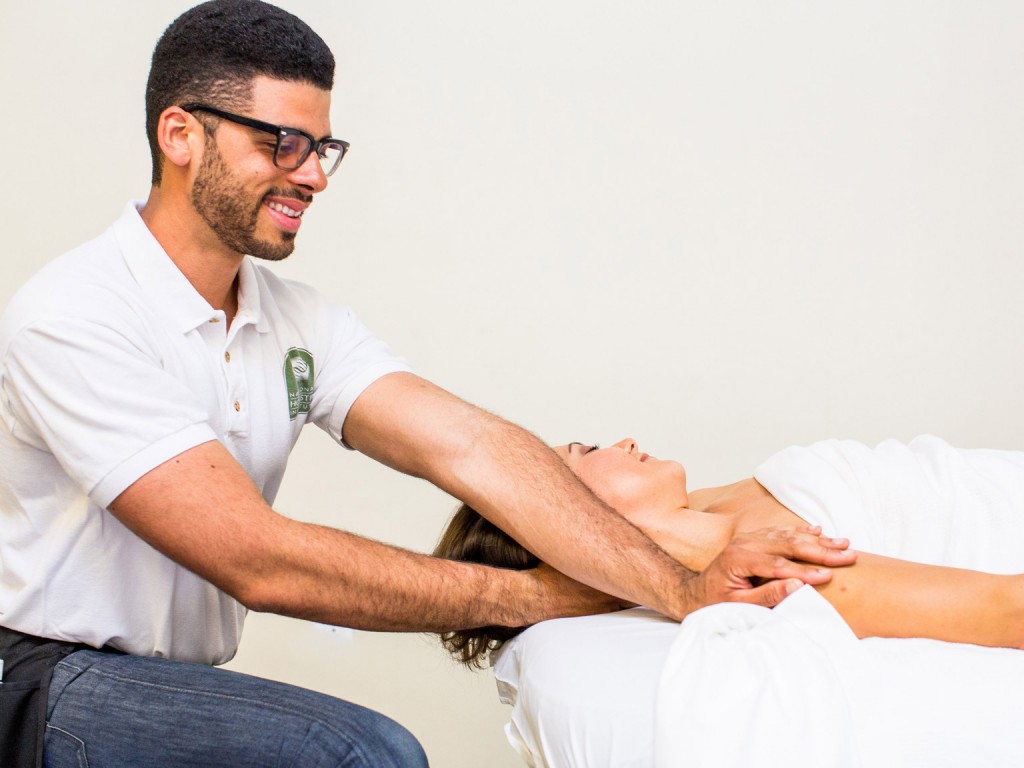
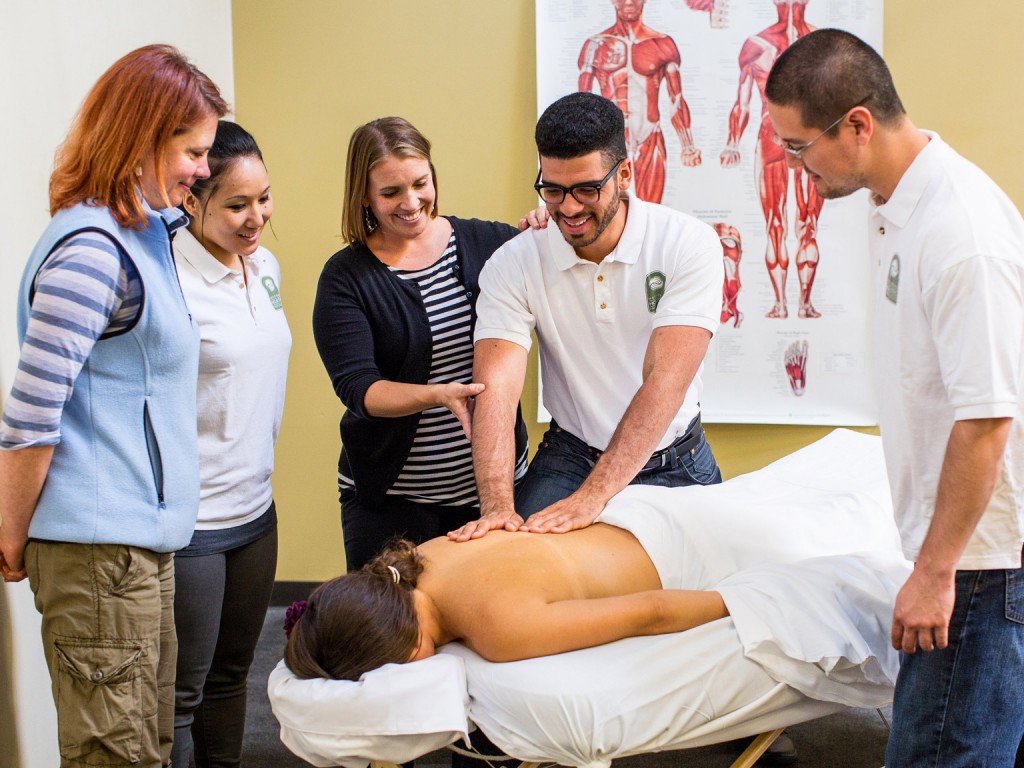
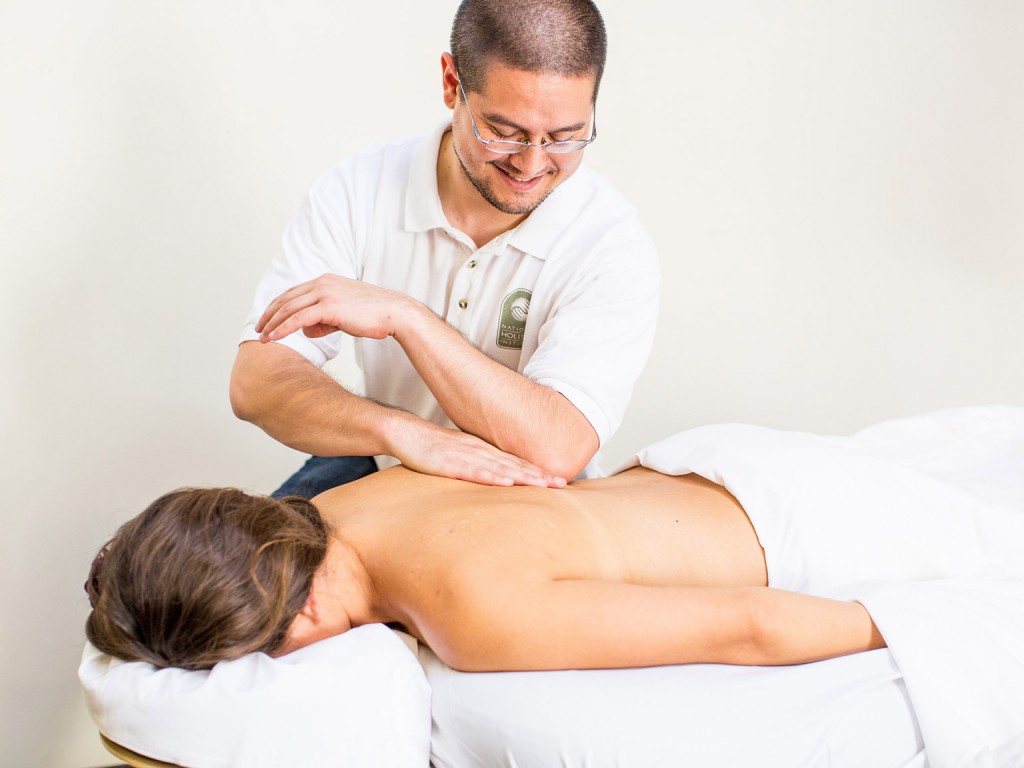
Advanced Neuromuscular Therapy
Segment
Click on any class name in the graphic or list below to learn more.
Advanced Deep Tissue
Done properly, “deep tissue” is about specificity of touch and angles of entry, not the compressive forces usually associated with this modality. In the ANMT the student therapist will gain an understanding of what it means to be more engaged while using less pressure and better body mechanics. The ANMT bodywork focuses on use of fingers, thumbs and elbows to palpate and identify bony landmarks and taut tissue. When the neuromuscular therapist finds a “knot,” this area will be hypersensitive for the client. As the therapist finds the appropriate angle of entry to focus touch on these areas, this will create a sensation of deep pressure for the patient/client. The client feels less pain than a traditional deep tissue massage and will experience better long term healing. Along with these new concepts and understandings of the bodywork come increased longevity in the field of massage and pain free work for the massage therapist.
Cadaver Lab Experience
Cadaver Lab experience has been described by students as extremely eye opening. Seeing the body in a three dimensional sense allows them to have a much firmer understanding of muscles in relationship to surrounding structures such as the organs and the skeletal system they envelop. This approach to learning about the body is highly engaging for our students. They get to actually see the layers of muscles and the relationship of connective tissues layers within the body.
Clinical Sports Massage
Commonly known injuries and pathologies can both occur during athletic endeavors as well as during every day activities. The familiar feeling of a pulled hamstring or a diagnosis of Tennis Elbow could be derived from playing tennis or repetitive work duties in a warehouse.
The Clinical Sports Massage therapist is able to understand the biomechanics of activity and mechanisms of injury that would contribute to pain and dysfunction for the patient/client. Utilizing that knowledge, along with an advanced understanding of functional anatomy, assessment protocols, and soft tissue healing, the therapist is able to strategize bodywork best suited for their patient/client for both preventative and rehabilitative treatments.
Though the title of “Clinical Sports Massage” may sound like every client is an athlete, the term is used to represent a focus on activity based injuries and pathologies. Clinical Sports Massage is not a singular modality. The practice encompasses a combination of advanced functional anatomy, kinesiology, and various types of stretching and soft tissue manipulation. In the ANMT program you will become adept at utilizing all of these concepts.
Critical Analysis of Client Needs
Learn to take the information clients give, assess it against your background of anatomy, and plan a customized session to address their concerns.
Injury Prevention
The massage therapist’s most important job is to work with a client’s pain and dysfunction before it becomes an actual injury. Often, patterns of pain and tension predispose an area to injury by causing inefficient or unbalanced movement.
For example, we work on Trigger Points and tension in the muscles of the lower leg before this pain and tension results in a more severe injury, like shin splints, stress fractures, or torn ligaments. We learn to explain this process to a client and then specifically plan out the appropriate bodywork and number of sessions needed to get the specific results.
Injury Rehabilitation
When a client comes to us with an injury, we can collaborate with other medical professionals to speed and compliment the body’s healing processes. Once a client has been diagnosed by the proper healthcare professional (ATC, PT, DC, MD, DO) with a particular condition, for instance sciatica, Runner’s Knee, or rotator cuff tears, we can collaborate with that medical professional to ensure that we select techniques, which will complement the recommended rehabilitation path. Our students learn the physiological processes the body goes through as it is healing, as well as the proper techniques to use to facilitate the healing and rehabilitation processes.
We learn to apply techniques that discourage the formation of excess scar tissue, apply proprioceptive neuromuscular facilitation stretches, apply lymphatic techniques, deep transverse friction, and post-surgical massage. All of these skills can help speed up the rehabilitation of the injured area.
Longevity in the Massage Profession
Discover how to provide deep work without using much pressure, how to respond to client injuries, and achieve very real results.
Medical Massage
In order to collaborate with health professionals, an in-depth client assessment and a comprehensive strategy are necessary. Students will learn the medical terminology needed for these interactions, and become proficient in the skills that are becoming essential to succeed, as healthcare fields integrate. Students learn a detailed assessment protocol known as HOPS (History, Observation, Palpation, and Special tests). The thorough and methodical assessment provides the therapist insight and understanding of the patient/client medical history and how these factors have contributed to the “problem” being presented. Short term and long term goals for patient/client care and health are created in conjunction with other healthcare professionals as needed. The neuromuscular therapist applies techniques such as lymphatic massage, PNF stretching, DTF, myofascial release, and somatics, which complement the body’s own natural healing processes. This is an exciting field that is growing in awareness and acceptance by both clients and health care providers as they look for integrative therapies in today’s health care system.
Myofascial Therapy
Students will learn to apply techniques specifically designed to affect the relationship of the muscular and fascial structures comprised in the soft tissues, by increasing range of motion, improving posture, and/or aiding the rehabilitation process.
Neuromuscular Therapy
In Neuromuscular Therapy, one of our key areas of focus and study is Myofascial Trigger Points. Trigger Points are microscopic spasms that form at the neuromuscular junction, where the nervous system communicates with a muscle. We study the physiology of a healthy neuromuscular junction, what goes “wrong” to activate the trigger point, and then apply specific techniques to encourage the neuromuscular junction back to healthy function. A muscle with trigger points becomes weak, painful, and dysfunctional, and can pre-dispose a person to more serious injury. In fact, symptoms created by a trigger point can mimic other clinical conditions. For example, a trigger point in Pectoralis Major might feel like a heart attack, in Supraspinatus might feel like shoulder bursitis, in Pronator Teres might feel like carpal tunnel syndrome, in Gluteus Minimus like sciatica. Therapists learn a thorough assessment procedure known as HOPRS to differentiate between myofascial dysfunction and trigger points, and more serious dysfunction and injury. Techniques applied to re-create neuromuscular health include lymphatics, PNF stretching, deep transverse friction, myofascial release, somatics, and corrective actions.
Orthopedic Testing
You will learn specific assessment tools to determine if massage is appropriate for a certain condition, or if you need to collaborate with another healthcare professional to ensure proper and effective client care. This information is obtained through an assessment protocol known as HOPS (History, Observation, Palpation, and Special [orthopedic] tests), a methodical and organized way to gather information about the client’s condition.
For example, a client comes in with low-back pain. It is important to determine if their low-back pain is due to a muscular problem, a nerve problem, or a joint problem. Using the HOPRS protocol of assessment and orthopedic testing, a massage therapist can assess for the likely origin of pain and dysfunction in the body. Massage therapists work with muscle and other soft tissue; when our testing indicates the possibility of a joint or nerve problem, we must refer the client to a qualified medical professional for diagnosis, and then collaborate with that medical professional for effective client care.
Pain Management
Obtain skills to assess if a muscle is the actual cause of pain, and apply appropriate massage.
Re-invigorating Your Business
Add exciting new dimensions to your professional work, to increase your business, by collaborating with other health care professionals and being able to work with clients with special needs.
Soft Tissue Injury & Healing
Students learn the physiology of soft tissue healing in order to discern where the client is in her/his healing process after an injury or surgery. Knowing this information helps to determine which modalities a therapist can apply to compliment and facilitate healing. Students also learn the likely causes of soft tissue injury, and how to help their clients avoid re-injury through client education.
Somatics
Somatics training allows massage therapists to gain a better understanding of how movement and coordination goes from a conscious to an unconscious process. Students will learn how muscle guarding patterns create postural misalignments and dysfunction, as well as how to apply specific Somatic techniques to release the body’s chronic holding patterns. Through this knowledge, therapists will be able to provide client education in Somatic exercises, as a part of their own self-care.
Trigger Point Therapy
Your patients/clients can get better, even after years of suffering from chronic pain. Trigger Point Therapy is one very useful part of neuromuscular therapy. The techniques used help clients recover from pain associated with various injuries and illnesses. We will discuss different types of trigger points and look at what are called referral patterns. Many muscles can send pain to areas of the body that seem unrelated. In addition to pain, we discuss other symptoms, which the patient/client might be experiencing due to trigger points, such as watering eyes, runny nose, heartburn, or digestive issues. Dysfunctional muscles can also mimic other health conditions of the body. We discuss what “activates” or creates trigger points in muscles throughout the body. This knowledge is incredibly useful in educating the client regarding activities they can do or avoid to become a partner in the healing process. One of the main goals of trigger point work is to alleviate pain and the associated difficulties with movement and posture.


